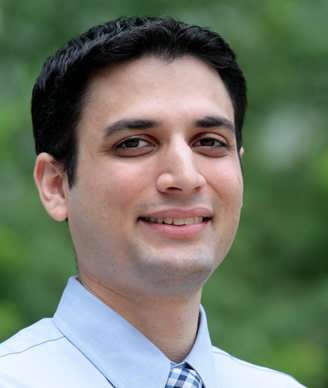ASCO Poster Sessions: Breast Cancer in Elderly Women
As physicians, we strive to do no harm, and there is a narrow therapeutic window when treating elderly patients with cancer.
Aaron Falchook, MD

As I have mentioned in previous blogs, the poster sessions are one of my favorite parts of the American Society of Clinical Oncology (ASCO) Annual Meeting. It is true that the most high-profile research is presented in oral abstract sessions or the plenary, but there are an incredible number of high-quality studies every year that can be seen during the poster sessions. As an additional bonus, poster sessions provide the opportunity to speak one-on-one with the presenting author to answer any questions about the work, and can be a great place for networking. It is possible to watch the oral presentation sessions on the virtual meeting website at any time, but at a poster session there is only a fleeting window of several hours in which to see a great deal of innovative, new research. This year’s breast cancer poster sessions contained several abstracts examining key issues related to breast cancer in the elderly.
The first study I want to discuss was presented by Sarah Mougalian, MD, (board 123, abstract 1009) and examined outcomes of adjuvant anthracycline, cyclophosphamide, and taxane-based chemotherapy (ACT) vs docetaxel and cyclophosphamide chemotherapy (TC) in older women. The study utilized the SEER-Medicare Linked Database. Detailed patient demographic information and disease information (ie, tumor stage, receptor status) was obtained from the SEER cancer registry, while Medicare claims were used to determine which chemotherapy regimens were used. The study found higher use of TC chemotherapy in older women, as well as those with more comorbidities and earlier-stage breast cancers. The 5-year adjusted survival was similar between women who received ACT chemotherapy and women who received TC chemotherapy. However, limitations included a relatively short follow-up period and lack of information about other disease endpoints (such as local recurrence and development of metastatic disease). Furthermore, it is difficult to determine doses of chemotherapy used with Medicare claims data, which may affect results of the study.
The next poster related to this topic is a long-term update from the CALGB/CTSU/Alliance 49907 trial and was presented by Hyman B. Muss, MD (board 136, abstract 1022). This randomized phase III trial compared capecitabine with standard chemotherapy for women age 65 years and older with stage I to IIIB breast cancer; 633 patients were randomized to capecitabine for 6 cycles vs standard therapy (physician choice of cyclophosphamide, methotrexate, and fluorouracil for 6 cycles or doxorubicin and cyclophosphamide for 4 cycles). The initial trial met criteria for early stopping, with a final Bayesian probability of inferiority of 99% for capecitabine vs standard therapy. This long-term analysis (7-year follow-up) shows significantly worse recurrence-free survival (60% vs 52%), overall survival (79% vs 68%), and breast cancer–specific survival (91% vs 83%) for capecitabine compared with standard therapy.
Finally, let’s examine the abstract by Henry G. Kaplan, MD (board 124, abstract 1010), which looked at chances in disease-specific survival over time for women age 70 years and older with breast cancer. There has been improvement in 5-year disease-specific survival seen in breast cancer patients over recent years. The purpose of this study was to assess if this improvement was seen among elderly women. To answer this question, the authors performed a retrospective study of a dedicated breast cancer registry database for women diagnosed from 1990 to 2007 (N = 1,889). There was less chemotherapy used among older women, and there was no improvement in 5-year disease-specific survival for women age 70 or older. During this same time, 5-year disease-specific survival improved for women age 65 to 70 years, from 93% to 98%. Five-year disease-specific survival for stage I breast cancer patients was constant for both age groups at 99%. Additional research is needed to examine factors related to the lack of improvement in 5-year disease-specific survival seen among elderly women with breast cancer.
These three studies highlight the challenges of caring for elderly patients with breast cancer. As physicians, we strive to do no harm, and there is a narrow therapeutic window when treating elderly patients with cancer. On the one hand, we do not want to administer intensely toxic therapy to elderly patients with medical comorbidities who may not be able to tolerate these treatments. Fatal treatment toxicity is one of the worst-case scenarios for any oncologist. On the other hand, withholding treatment because of concern for toxicity can lead to worse cancer outcomes (the other worst-case scenario for oncologists is failure to cure the patient of their cancer). The question of reducing treatment and maintaining cure rates vs reducing treatment and not maintaining cure rates is exemplified in the first two abstracts outlined above. In the third abstract discussed, we see that despite our efforts, we may not be doing much better now than we were years ago when treating breast cancer in the elderly. This remains a challenging area for oncologists, and the importance of this issue will only grow as our population continues to age.